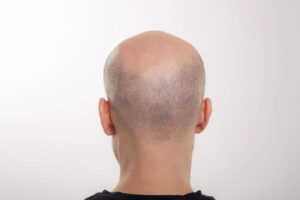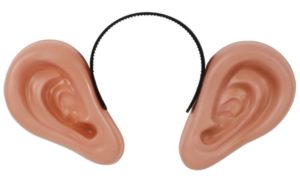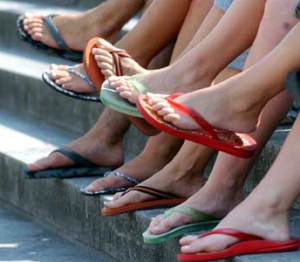Why You Need to Cover These Five Spots with Sunscreen
Melanoma and sunbathing, the two just don’t sound good in a sentence. How can something that feels so wonderful, yet is potentially harmful to you? Seriously something to be concerned about, the threat of skin cancer due to increased sun exposure is very real. It isn’t a scare tactic used by the cosmetic industry to increase revenue.
Sunscreen application needs to be an integral part of your daily routine, as it’s your best defense against developing skin cancer. The good news is you don’t have to forego building those fun sandcastles at your favorite summer beach spot. So, pack the quintessential summer beach bag necessities – beach towels and sunscreen and let’s cover what really needs to be covered.
The Scalp

Melanoma on the scalp is one of the most difficult to detect and lethal. It doesn’t present like a mole necessarily. While part of the reason they are thought to be more lethal is due to their lack of detection, some doctors think that the higher concentration of blood vessels in the scalp and proximity to the brain may also make cancer more aggressive.
Your best defense is to apply sunscreen to the scalp liberally, especially if there are areas of balding or thinning hair. Also, consider for a sunscreen gel—which is less oily and absorbs into the skin faster than creams. Plus, it won’t make your hair greasy. If you drive a convertible or ride a bike, wear a hat during sun exposure.
The Ears

Application of sunscreen in this area is often passed over. Sunscreen concentration should include placement on the outer lobe, top of the ear and behind it, however do not put sunscreen inside the ear canal. Sunscreen sticks work very well for application to the ear area.
Because of the ears exposure to the sun, be sure to inspect them, especially the backs of the ears where you can’t see that well.) Warning signs may be felt or seen. It may appear as a firm red nodule, a scaly growth that bleeds or develops a crust, or a sore that doesn’t heal.
The Tops of The Feet

We love flip-flop and sandal weather, but leaving your feet out of the sunscreen-application process is another mistake. Skin cancers affecting the feet may have a very different appearance from those arising on the rest of the body. A thick layer of dead skin cells protects the soles of our feet against the sun’s ultraviolet light. But the other side of your feet faces the sun directly when we’re wearing skin-baring shoes. That makes this area especially vulnerable to the sun’s rays.
The Lips

Our lower lips are at a very high risk of skin cancer. The skin on the lips is thinner; it is more vulnerable than the rest of your body. Also, lips have no melanin, they are left unshielded. (It’s the blood vessels just beneath the surface of the lips that provide their rosy color). We know that sun exposure destroys collagen, so it thins the lips over time. Lipstick or gloss is not a sun shield just because it’s layered on top of the lips. Indeed, it can make matters much worse. Choosing a lip sun shielding product with at minimum an SPF rating is recommended.
The Eyelids

According to experts, the eye region it protects occupies only about 1% of human skin but accounts for 5% to 10% of all skin cancers. In addition to wearing sunglasses with UVA/UVB shielding, applying a sunscreen of 35 SPF or higher and especially designed for the face and eyes is advised. Of course, when applying the sunscreen product, avoid getting it in your eyes.
In conclusion, be sure to pay close attention to the following sunscreen recommendations with regards to proper application.
- Choose a product with at least 15 SPF. The number indicates how well the product protects from the burning rays of the sun.
- Apply the sunscreen at least 20 to 30 minutes before you go outdoors for 30 minutes or more. If you wait to apply sunscreen until you hit the beach, your perspiration makes your sunscreen less effective.
- Reapply sunscreen every three hours while you are outdoors.





